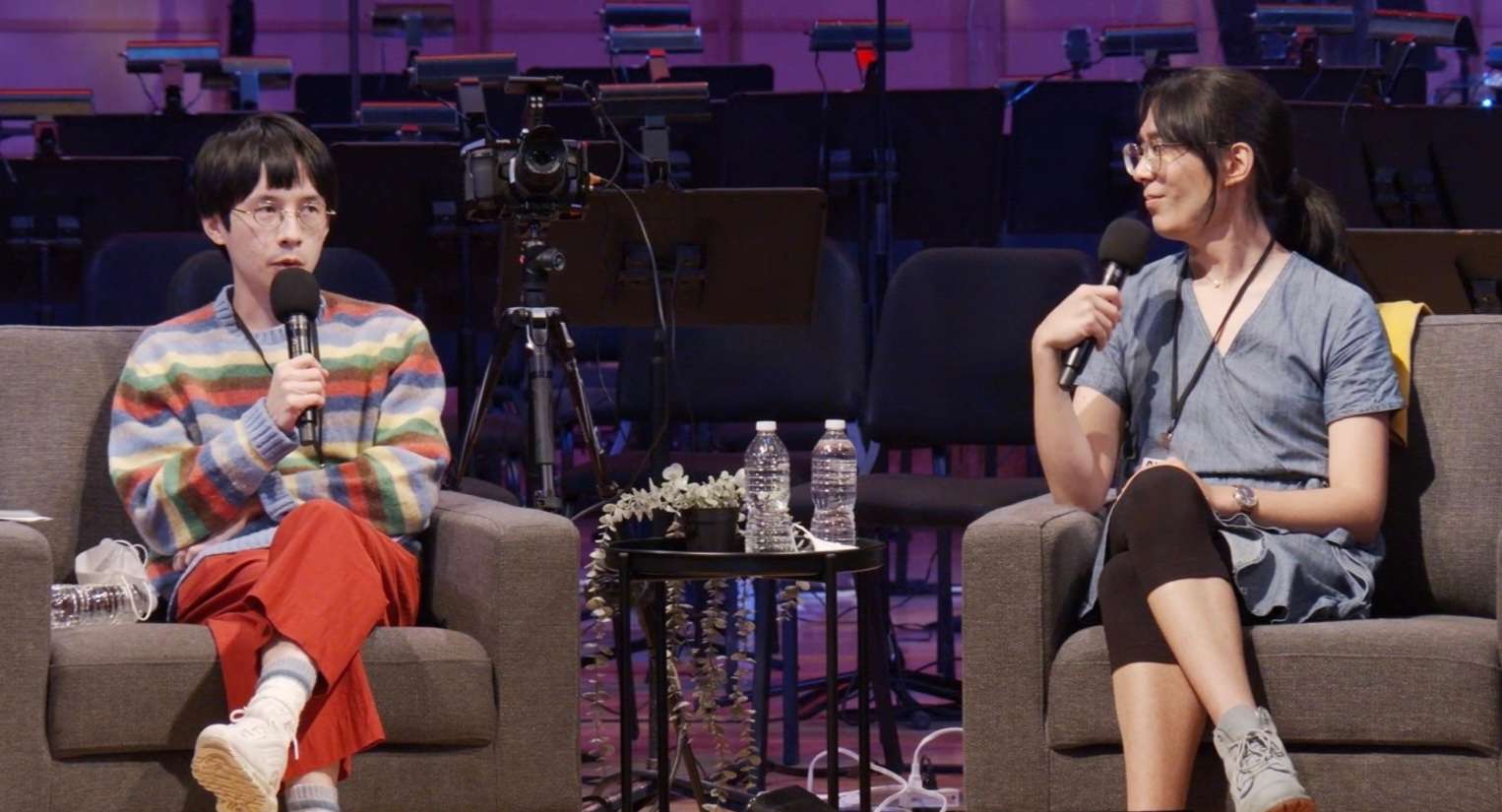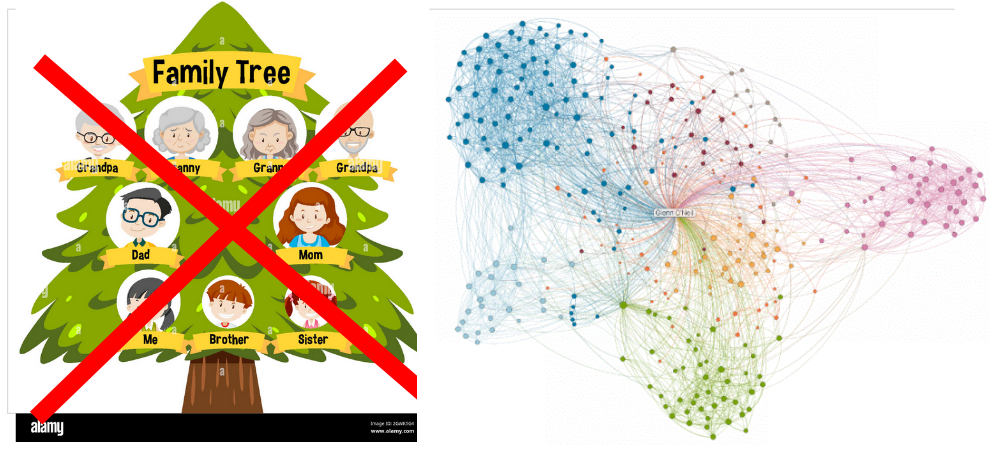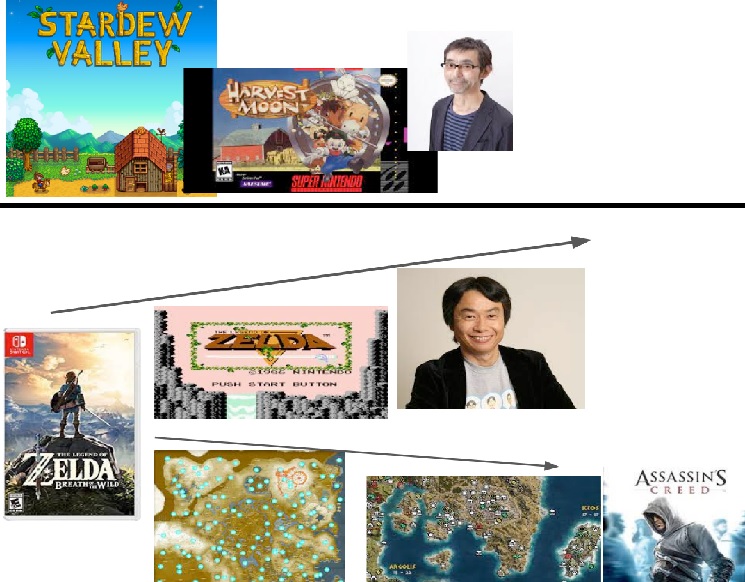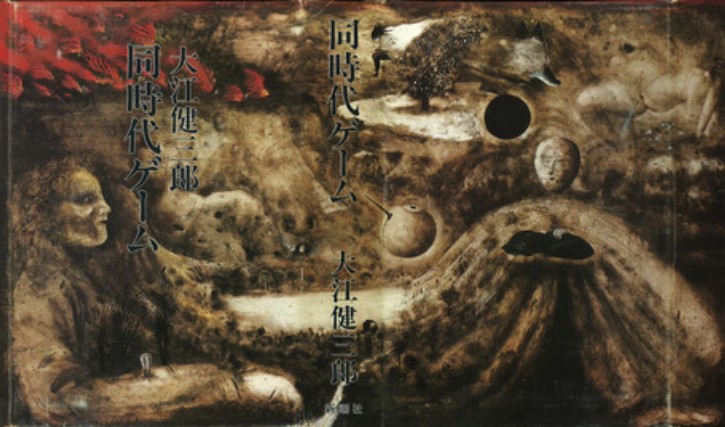Context
This is the transcript of my Keynote Speech at University of British Columbia's Games In Action conference. I gave it on Nov. 4th 2022. Our keynote was two short talks (Marina gave one as well) followed by a Q&A by the wonderful Halimat Alabi who acted as our moderator. A big shoutout to scholar/novelist/indie dev Chris Patterson for inviting us and helping organize the event with Grace Wood of UBC. Check out the demo (as of writing) of the game adaptation of Chris's novel Stamped: here. If you're a fan of Marina and I's work I think you'll like it (both the novel and game.)
Following the transcript will be some other context as well as answers to Q&A questions we weren't able to address on stage.

ESSAY: Crafting (Ludo)ancestry
How many Games released on Steam in 2021?
How many games do you think released on Steam in 2021? Take a second to guess. (...The answer is...
It's common to have trouble picking what game to play next. In order to save time and effort, it's common for today's gamers to to turn to human influencers or AI-driven recommendation engines to decide what to play. Of course, these sources gravitate around newer games and popularity. An AI source will optimize for sales, a human, for views. There are exceptions, but I imagine the main way of finding games to play in 2022 relies on waiting for a recommendation to appear - rather than seeking one out.
Be it a streamer growing an audience with the latest popular game, or lore influencers picking apart a AAA game's teaser trailer, there's a serious imbalance towards the new. Rather than play something older that we might be more inclined to like, we may pick the new, simply because it is new - even if it might be a middling or repetitive experience. I don't suggest that new games are bad, but, with an endless number of existing games to play, it is disappointing that common methods of consuming games overlooks the vast resource and history of the internet.
Post-Zynga
With games now firmly in a post-Zynga era - where Zynga's influence on games is so omnipresent as to be invisible - we increasingly see games that take influence from the addiction techniques developed in the Gambling Industry since the 1980s, to maximize retention and playtime. These techniques influenced Zynga's 'casual' game design, such as in Farmville.
We see these ideas employed not just in mobile gacha games like Genshin Impact which entice players to either spend real money - or spend real hours grinding for fake in-game money, but also in the tendency for games to be designed with loops that encourage long play sessions and "endless" gameplay - for example, "Merge Games" (like Merge Dragons), or loop-based "Roguelikes" which might entice you via Treatmills (see my 2020 essay on this). Such ideas of retention have always been part of game design, but in recent years their function in games has grown worryingly larger.
What do Casino Lobbyists and Game Fans have in common?
The Gambling Industry has been SO successful in influencing games, that their arguments that addiction is a deficiency in the player, not the slot machine - has its logic reproduced almost exactly in many players of "casual" mobile games and console games alike.
To summarize a common line of thought on many mobile game subreddits. Post even the smallest of criticisms of the game's monetization practices, and you will be met with at least a few permutations of "The problem isn't the game letting you gamble, it's players who can't self-control!" This echoes the logic of casino lobbyists who strive to keep casinos addictive and destructive. And no matter what, it's the company who wins, as endless videos of people 'whaling' on gacha game are easy to find.
How do we have more fulfilling relationships with games?
Does a game want us to have a memorable experience? Or does it want us to stay in an unsatisfying, shameful loop, the dog collar of incremental bonuses obediently coaxing us along? Despite developments in game design that I would categorize as positive, there's also a parallel growth of design practices, fostering unhealthy relationships to gaming.
So at times I would wonder: As players, is there a more fulfilling way to have a relationship with games? How do we chart our way, at least partially, away from the constant stream of algorithmically-supported releases? We already have word of mouth, which can surface experiences off-the-algorithmic-path. Many writers and content creators work to talk about games that aren't just Nintendo's latest offerings, from retro-focused YouTube channels to collections like Indiepocalypse that showcase lesser-known games.
I think there's another step that people can each take themselves.
Question Time!
First, Let's take a minute to answer this question. Just name the first games that come to mind:
1. What was a first, formative game you played? (E.g. Super Mario RPG)
2. What is a recent game you played that feels related to that first game? (E.g. Dragon Quest 10)
Keep those answers in mind through the rest of the talk.
Imagine Your Ancestry

Let's think about 'culture'. Consider, foods, languages, or hobbies that you feel define yourself, from speaking Chinese, to growing up near McDonalds. The things we take interest in, in part, stem from the people we grow up and live around. While "ancestry" usually just means family, what if we redefine it to be broader?

Instead of 'ancestry', let's consider 'Ancestry'. We can view it as a historical network of people both living and dead, whose relations create the culture we participate in. I might be connected not just to Asian-Americans who grew up in the suburbs, but also fans of particular musicians or game developers from the 2020s. In this sense, this broader Ancestry isn't a fixed thing - in fact, it's something we can change and is always changing. By stepping into a new job, a new hobby, a new language, we also begin to "craft" our ancestry, branching out to new networks of people and things.
But let's restrict the range of Ancestry to games. When we enjoy a Zelda game, we're not just connected to other fans of the games, but to the developers and their influences. Collectively the games someone plays embed them into a 'Ludoancestry' (roughly using "ludo-" to restrict the notion of Ancestry to games, here) of the games they've played, connected to the games' fans, critics, and developers, influences, etc.
Imagine your (Ludo)Ancestry

Playing Stardew Valley links you to Harvest Moon's developers, but also the creator Yasuhiro Wada and his childhood.
Zelda: Breath of the Wild links us not just to Miyamoto and his childhood forays into caves, but also the designers behind Assassin's Creed and its tower-and-item-driven open world.
Genshin Impact links us to Chinese culture and Japanese anime, but lobbyists, somewhere, who spend their lives fighting very hard to make it legal to spend over $10,000 obtaining an anime character.
If I think about my Ludoancestry in relation to Final Fantasy 9, I might see the influence of Western Fantasy, which brings up the question of what other, lesser-known Japanese games were influenced by those ideas. With those questions, I might be able to find out about new works. Can you think about a few "ancestors" to one of the games you thought of earlier, be it a developer or related game or artwork?
Before I get into that, I'd like to outline how I came to the idea of Ludoancestry.
Center, Periphery

The games I've worked on often feature a 'periphery', whether it be within the context of religion, race, or nationality. The protagonist Yuito from my 2018 game All Our Asias, an upper-class Asian American, explores ways of participating in less 'center' and money-focused culture.
Nova from our 2019 game Anodyne 2 finds a new life path, inspired by the lifestyles of the less-powerful Dustbound peoples, who live on the borders of the game's reality. Both characters progress more towards the "periphery".
Because this broad theme is present in many works, once I became aware of my interest in it, I could use it as a basis for finding other media that is either peripheral to some mainstream culture (for example, a small indie game), or contains peripheral themes itself.
Games often relate to things outside of games. For example, Sephonie is influenced by Tony Hawk, but also a variety of novels and nonfiction books (such as Yoshie Hotta's Judgment or Kuan-Hsing Chen's Asia as Method). So I feel there are always useful connections to be found through non-games media.
Note: Here's a short review I did of Judgment in 2015. For more info on Asia as Method, see here.
Somersault
A few years ago, thanks to a chance encounter at a bookstore, I read Japanese novelist Kenzaburo Oe for the first time, eventually taking me to his work Somersault, which earnestly explores followers of a spiritual "New Religion" in Japan. Set both in Tokyo, and the rural region of Shikoku, I have found the periphery of Shikoku and fringe, New Religion to be interesting, which led me to learning about his 1970s, untranslated, The Game of Contemporaneity. (同時代ゲーム). I'll refer to it as The Game.

Unfortunately, the difficulty of this novel is beyond my Japanese ability, so I've only been able to read criticism and analysis of it. To understand this work, it helps to give some context. This is the 1948 mural, "Dream of a Sunday Afternoon in the Alemeda", by Diego Rivera, which is, quote, "A (panorama) of Mexican history depicting (significant people and events) coexisting in the same space and time." (Isherwood [1])

In 1976, Oe saw this mural while teaching in Mexico, and it, as well as the magical realist movement inspired him to write The Game.Taking place over 6 long letters, the protagonist must record centuries of his rural Shikoku village. The chronology often weaves together different times and places, creating a mural, mythlike-texture of the village, where various histories blur together.
Lamenting the standardization of Japanese culture, Oe mentioned "the peripheral areas (of Japan) were sacrificed, because of the tendency to orient everything towards the centre.” (Oe 1982). For instance, the Tokyo dialect, or western notions of what "Japanese people are like" are all effects of this 'standardization.' When Oe considers his village's 'local history' as the periphery, against the central, 'standardized history of Japan, there is the sense of trying to show what narratives a 'standardized history' might leave behind.
Standardized narratives in games
In addition to its exciting approach to fantasy and myth, thinking about The Game in relation to videogames, it made me wonder, what are the long-term effects of playing and making games under the narratives of Newness or Popularity equaling Progress, or the normalization of Addiction and Retention techniques? Are we ceding too much of the culture of games to what amounts to optimizing for ad revenue?
Like Oe focusing on his home town rather than the narrative of the Japanese government, If we want to find something worth remembering, we might have to look outside of standard methods, and towards something closer to ourselves. That is, we don't always have to click refresh on the 'top new sellers page'.
People can, and are, through their scholarship, games, writing, curation, or projects - creating bridges to their personal 'networks of ludoancestry', whose novel connections and insights encourage others to engage with games through frameworks outside of Newness and Trends.So how can I use the idea of ludoancestry to find a game that is not just 'good' but also potentially personally meaningful?
Uki-uki Carnival
Let's think about an "Ancestor" that many of us in this room share. Nintendo. We all know the Marios and Zeldas, but what about the more overlooked work that was released alongside Nintendo's "canon"? Thanks to a bag of old Japanese GBA games that my spouse grew up playing in Taiwan, I was able to find out about Sakura Momoko's Uki-Uki Carnival, an puzzle-adventure game featuring an in-game internet. (Read more about the game in an interview I translated here.
In it, you explore webpages and a town in order to help invite the games' characters to a big carnival. The humor is appealing to children and adults. The internet system calls to mind later indie games like Hypnospace Outlaw, Digital: A Love Story, and Subserial Network.

Image Source: Michibiku.com's review
Not only does Uki-Uki Carnival have personality and great design, but the creative director, a woman named Noriko Miura, was an outsider to the industry. Her influences from childhood Japanese festivals and towns are a reminder that knowledge of both games and other things is vital to interesting game design. I wondered if there were similar games. Unfortunately, my search didn't turn up much, as the game seems to have sold poorly, but I was able to find an interesting link through Miura's sister - Sakura Momoko, who provide illustrations and art direction for Uki-Uki Carnival.
Sakura Momoko's Manga Coji-Coji
Little-known in the English world, Sakura Momoko was a famous manga artist, known for Chibi Maruko-chan. She would write the manga Coji-Coji, which takes familiar school, slice-of-life and gag manga tropes, and transmutes it into a setting based on western Fairy Tales, with characters inspired by Western and Japanese mythology.
You can watch some Coji-Coji in english here: here!

The characters are students, who are studying to become brand mascots in the human world. However, school figures very little into the actual events of the work, and arguably is used as an excuse keep the characters in a stage of life where they can regularly encounter each other. They are also immortal, some with mythological powers (e.g. a sun god), and this unconventional approach to characters and setting is where much of the series' humor and charm derives from.
For examples, in one scenario, the entire cast is misled into believing two Japanese humans (in the bottom left) are God, throwing them a welcome ceremony. Coji-Coji, still unique by Japanese standards despite its popularity, was a welcome reminder that the tropes of Fantasy, or slice-of-life and school, can be combined in an entertaining and thought-provoking way.

Other “Fairy Tale” Games
By playing a forgotten, never to be remastered GBA game, I was able to find a connection to a work I wouldn't have encountered in my lifetime otherwise. Further, it widened my interest in the techniques and genre of "Fantasy", especially when mixed with "Realistic" genre tropes.
And although I don't have time to discuss them*, thinking about Coji-Coji's usage of "Fairy Tales", got me looking into other games in the 90s and 00s, with works like Fantastep, Napple Tale, Doki-Doki Poyacchio, or Nanatsu Kaze no Shima Monogatari. Each of these have a novel, experimental and inspiring approach to game design and visual setting, potential branching points for diving even deeper into the history of games.
*Since this is a post now, I'll give brief details. Fantastep for PS1 is an item puzzle adventure, and is untranslated, I did a narrated walkthrough of some of it on Youtube. It's a bit janky. Napple Tale for Dreamcast is a quest-driven 3D platformer, there's a translation patch out! I think the game holds up well. Doki-Doki Poyacchio (PS1) is not translated, but I recommend it if you read Japanese. Its experiments don't 100% work but it's a great take on the 'summer vacation / harvest moon-esque dating mechanics' genre. Nanatsu Kaze is an obtuse children's adventure game with beautiful illustrations. Japanese only(?) but worth checking out or watching.

Concluding Thoughts
By using Ludoancestry, games feel more like cultural works in conversation with other humans past and present, rather than just ‘new products’. It's a way to view your history with games to find 'search queries' for serendipitous encounters with other games, new or old.
It makes the process of playing games feel 'lively', even energizing - especially when sharing findings and experiences with others. And, it's a way of remembering that what we see on our feeds everyday is not all that's out there, but an algorithmically, at-times flawed, fragment of reality.
As a closing thought, let's think about the games you thought of in my question earlier.. What things link those games, and what is that link related to? Are there games in-between that act as stepping stones? Did the games influence other games? What were the developers like, as people? Were there games you played in between that related to your interests?
By using our Ludoancestries as a base for finding our personal rabbit holes, the history of games becomes feasible to explore. So, when it comes to our relationship with games, maybe, there is the possibility of a 'good ending' after all.
References
[1] - CHRISTOPHER ISHERWOOD - BEYOND BOUNDARIES: CENTRE/PERIPHERY DISCOURSE IN OE KENZABURO’S DOJIDAI GEMU & WITI IHIMAERA’S THE MATRIARCH. Accessed 2022/10.
Other
UBC Assistant Professor Dave Gaertner, New Media and Digital Storytelling specialist, talked about my talk during the conference's closing remarks. I found it interesting to see someone else's takeaways from my talk, and you might too! Read Dave's thoughts here: here.
Q&A
After the talk I got a few questions regarding my part of the talk that I wasn't able to answer at the time. Thanks to the power of Slido (lets you add audience interaction to your slides!) we could collect questions to answer later, which I usually prefer as answering on stage is tricky.
What's your advice on creating meaningful, impactful narratives that can speak to people of different experiences, and perhaps different [ludoancestries]?
In general, I would say the width of the appeal of a narrative tends to tie to how common that structure already exists in amongst the population. For instance, straightforward and idealized romance stories hold a lot of appeal because they tap into our ingrained (ingrained by popular movies/stories) notions about happiness and romance. Of course, it's debatable how impactful or meaningful making another story like that would be. But it's not worth discarding completely, you can dial it a bit back from being full-on cliche, doing something more surprising. It just might speak to fewer people (not a bad thing, I think.). I think there's a similar idea when applied to Ludoancestry - a story told through the format of a game that is well-known is more easily accessible for more people, as people sort of 'know' what they could be getting into. The tricky thing is that if I make a really Harvest Moon-looking game, it won't appeal to a DOOM fan. You could make a DOOM-Harvest Moon game to try to get at people who have either game in their Ludoancestry, but then you lose the 'easy appeal' that you'd get just making a heavily DOOM or Harvest Moon-influenced game. It's up to the designer how much they want to lean into game design or narrative structures that are very common (but more popular).
Ludoancestry is such a potent temporal collectivization of labour and holistic understanding of creativity. How do you envision this [would act to trouble the notion of] "ownership"?
Thank you! Hearing it framed as a 'temporal collectivization' is interesting. I suppose game companies viewing their practice more relationally would, ideally, encourage them to share more of their techniques/processes, acknowledge influences, or support things like emulation or no-strings funds, or even just participating in uplifting other games. Really, if developers all did at least one small thing outside of landing big deals and pushing on endlessly to the next game, that would be neat. Creating any game (or artistic work) does incur some amount of 'debt' to the history of that medium. There's lots of studios (mostly AAA, some indie though!) that are like 'money sponges'... all they do is retweet their game sales or merch, you never see a mention of some other game or whatever. It feels very corporate, and it weirds me out. (If you're reading this it's probably not you. Unless you made over a million dollars last year and haven't talked about another game in over a month, in which case: It's never too late to repent...) The pattern is roughly that someone sucks up a bunch of weird design ideas from freeware or smaller games and then makes like a kajillion dollars off of it by putting some mainstream spin on it, vanishes from the scene, while being critically lauded into infinity... On the AAA level, think Nintendo R&D rarely explaining their tech, etc - basically there's a lot of 'hiding behind the veil of genius', on developers of all scales. It's sad, really.
Has making games that reflect your personal experiences as Japanese American changed your relationship with your ancestral past?
I think this may have been aimed at Marina but I'll still answer - I think it's made me more 'at peace' with how I relate to other Japanese or Taiwanese Americans. I think many of us are born into a sense of wanting to police boundaries of authenticity ("Ketchup on rice isn't asian!") or overgeneralize our experiences as universal (e.g. the prevalance of viewing 2nd-gen Chinese-American narratives as a stand-in for Asian American representation), but really there are so many cultural differences amongst a group of people that it's silly to draw lines in the sand. I guess now I also like to think about the various historical forces/contexts that shape someone into who they are, it's fun to think about that stuff. Like, why does this person have these belief systems? Etc. It's also freeing because I can approach studying (or not) my ancestral homelands on my own terms, there's less pressure that I might be 'doing it wrong' or something.
When facing the imbalance against new and independent games what method of promotion have you found most effective? How do you deal with any related frustration?
I'm not sure I'm the best to ask this, ha ha! Our games aren't that profitable or appealing on a general level. Promotion is directly related to appeal to popularity, so I guess the basic formula is to make something slightly novel that looks really approachable. In my opinion that can be a little boring, but then again I'm not the multi-millionaire cashing in on schlocky-shock-value trauma-salad-character bucks so, who gets the last laugh...? Well, I think if you can figure out a lean/quick production method for games, or get a sense for what 'popular appeal' is, that would be good. Then focus on figuring out funding for a small team, do console ports or try to get funding from deals (I haven't been able to do this...).
As for frustration, well, I guess I don't feel too frustrated because I do believe we are the ones making some of the better games. I may not be able to buy a house but hey. I think it is worth compromising a bit for profitability though, but not too much! Ask me this again in 2 years...
What might be some “retention mechanics” for ludonarrative ancestry?
I'm not sure I understand the question - if it meant 'ludoancestry', there wouldn't be retention mechanics as 'ludoancestry' isn't a game. If I interpret the question wider - like - how do you get people to commit to thinking in this way? I'm not sure, but I feel like if people try it - (I mean, people probably already think like this in other contexts) - it might start to feel nice, they might do it more? The idea of the talk is just to sort of open people to the notion that it's not too tough to try living with games in this manner.
How do you square advocating playing older games as a player with wanting people to play your own new games as a developer?
This is an interesting question! I think I overemphasize new/old in my talk: I more want to emphasize striking a balance of "finding things on your own" vs. "finding things because something magically showed it to you". Well, of course I rely on the latter for spreading word of my new releases. Ideally people would be doing a bit of both, though. If in the long run new games make less money because people play more old games, and people can't make big games, that wouldn't really bother me, but that gets into more philosophical territory (some people believe that you need certain levels of scale to achieve certain gameplay experiences. While I acknowledge that's technically true (sure you can't make, say, FF14, without a big team), I don't see why 10 solo developer games are worse than 1 10-person game, or why we're so quick to the argument that humanity As It Is is better off than a humanity If Large Team Games Were To Become Economically Unfeasible.)
While ludoancestry is a nice frame for conscientious game consumption, how can ludoancestral exploration be pushed into the mainstream?
Part of why many people rely on either playing the same kind of game only or only using recommendations is they don't have enough time/energy to decide (or to care to decide). I always like to lean more towards the aspirational side of things, while yes I don't expect someone working overtime to have time to become a hardcore RPG Maker otaku, I do think it's possible to - if you're already compulsively playing some game for 20+ hours a week - to redirect some of that energy towards playing other things, sometimes. It's easy for this line of argument to be misconstrued into some kind of neoliberal 'work harder!' mindset, but really the idea is just about making a small change in how you view something you already to, to make life more fulfilling.
Do you foresee yourself having internships or teaching game creation courses?
No internship plans (we're more likely to hire contract positions or give away grants in the future), or teaching plans (I did teach game making at SAIC in Chicago from 2016-2019, which was fun, although as it was not part of a curriculum it was sort of impossible to teach in someways, too many topics to cover and experience levels varied too much.)
Challenges in finding a 3D art style after working in 2D?
More of a Marina question, but from what I can tell if you have a game like Sephonie where everything needs to be readable from every angle that makes art decisions really tricky. In a game like Anodyne 2 or All Our Asias it matters less so you have more flexibility.
How did you and Marina come to collaborate?
Introduction via mutual friend during college, then working on Anodyne over e-mail.
Interest in making TTRPGs or Analog Games?
Not sure about Marina, but for me, not at the moment, although I wouldn't rule it out. I generally gravitate more towards computer games as to me the spatial design and music components are a big draw of the medium for me. I enjoy board games and TTRPGs, although I've only played shorter TTRPGs (like some of Everest Pipkin's work).
Do you generally design your games for a North American audience? Have you had ideas for international audiences, too?
Outside of perhaps the American contexts of All Our Asias and partially Sephonie, most of our games 'localize' fairly well to other countries. Regardless of setting, we are both USA born and raised so there will probably always be some sense of the "North American" in our work for better and for worse. But I would say we don't try to make our games overly culturally specific to the USA or something.
How have you funded your development?
Anodyne 1 was done in free time during college, so that was funded by parents. We also got in during the initial Steam boom around 2013. Also part of that is that Marina and I have very synergistic skillsets - she had been writing comics and I had been writing music, so we didn't need to find people to help with these things. All our other games were funded by a mix of part-time jobs and other game sales. Console ports have been hugely important. Neither of us have children and I live in Japan with a partner so my costs of living are luckily extremely low! I would still say we could definitely use more money, though... we do want to find funding for this next game.
How long was development for your games?
Anodyne 1: 10 months (Good tools, mostly derivative design). Even the Ocean: 3.5 years (bad tools, bad preproduction, bad prototyping, oops!) Anodyne 2: 1.5 years (while I was teaching part-time, too!). All Our Asias: 1 year (also teaching.). Sephonie: 2.5 years (pandemic, 3D just being very time consuming, lack of some tools). We've been working on our current game for about 6-7 months total.